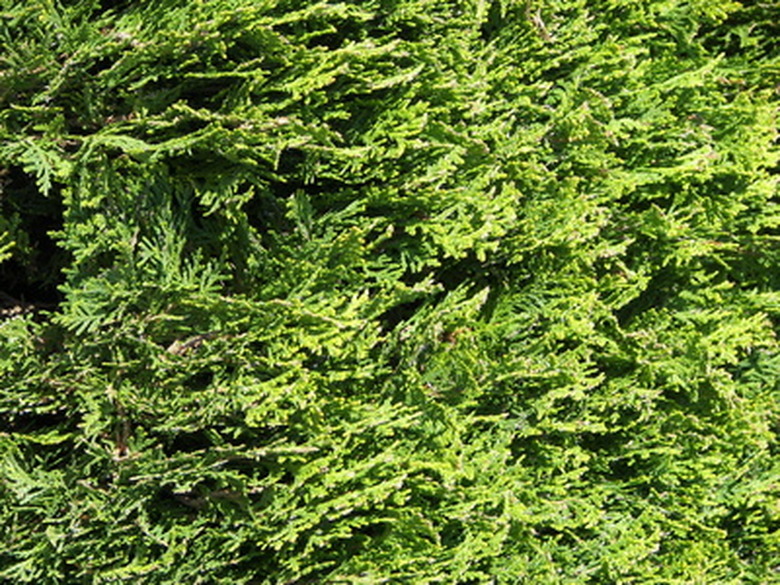Thuja Green Giant Diseases
Thuja green giants are a needled, evergreen tree that are popular largely because they are both disease- and drought-resistant. However, just because your green giant does not get sick often does not mean that it is invincible. There are a few thuja green giant diseases that can topple these fast-growing evergreens in a few years or less. Getting familiar with warning signs and symptoms can help you prevent the loss of your tree.
Bagworms
Thuja green giants occasionally will pick up bagworm infections. Generally you will not spot this infestation until the bagworms have started making their namesake "bags" on the branches using bits of bark and leaves along with plenty of silk from the worm itself. Bagworms can defoliate your tree, so if you notice that some of the leaves are brown or the branches are bare, check them for signs of an infestation. Bagworms can be controlled by removal, if the level of the infection is not too severe, with a bacterial spray that contains bacteria that will kill the bagworms or with a chemical treatment–orthene and diazinon are both options. Make sure that you coat the thuja thoroughly if you decide to spray or you will not eradicate the disease.
- Thuja green giants are a needled, evergreen tree that are popular largely because they are both disease- and drought-resistant.
- Bagworms can defoliate your tree, so if you notice that some of the leaves are brown or the branches are bare, check them for signs of an infestation.
Scale Infestations
Thujas may also develop problems with scale bugs as they age. Scale bugs can be "hard" or "soft," and since thuja green giants are evergreens, they are susceptible to both. Scale insects are about the size of a grain of pepper, so they can be pretty difficult to spot until they burrow into the needles or branches of the tree, at which point they raise hard, rust-colored blisters in the case of hard scale and start to ooze a sweet, sticky substance that promotes mold and mildew in the case of soft scale. Both forms of scale can be combated with horticultural oil, which smothers the organisms.
Rots and Blights
Like most trees, a green giant thuja can succumb to rot or blight in its roots. Generally root rot and root blight are a symptom of over-watering, which is easily remedied in the case of the drought-resistant thuja. If you notice that the tree seems to be "thirsty" with wilted, brown leaves even though it is getting plenty of water, then the roots likely are not functioning correctly. You can try to correct root rots and blights by making sure that the soil is well-drained and only watering your thuja when soil is completely dry. Also, be sure to water early in the morning. However, if your efforts do not enable the tree to overcome the rot in its root system, you will need to remove the plant from the area to avoid infecting surrounding plants.
- Thujas may also develop problems with scale bugs as they age.
- Both forms of scale can be combated with horticultural oil, which smothers the organisms.
